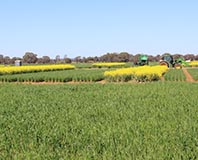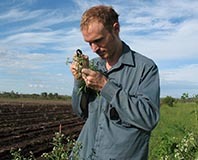Read the latest information on
Foot-and-mouth disease

Secure your farm: manage the biosecurity risks posed by researchers and their vehicles entering your property.
Research sites and field work are a fundamental part of agricultural research: after all, they turn ideas into new farming practices.
However, researchers should be made aware of the farm biosecurity risks associated with conducting field research and demonstrations, and the measures that you would like them to use to minimise those risks.
Two of the main risks of not asking researchers to implement biosecurity measures are:
Managing these risks by ensuring compliance to good biosecurity practice is simple will safeguard everyone involved in conducting and hosting field research.
1. Have a detailed ‘contractual agreement’ with the researchers
Make sure the agreement includes:
2. Employ a ‘keep it clean’ policy for on-farm research
3. Make sure that every researcher complies with your requests
4. Consider the location of the field site
5. Ask that they carry a vehicle biosecurity kit at all times.
The contents of a vehicle biosecurity kit include items for keeping hands, equipment and vehicle interior free of plant debris and pests. (More information about biosecurity kits)

Some field trials involve growing new crop varieties and testing them against attack by pathogens. Make sure these pathogens don’t become established on your property by asking researchers about their plans to prevent that from happening.
Become biosecurity aware when hosting research – remember you are at the forefront of good biosecurity practice.
If you need help to create a biosecurity plan, identify biosecurity risks or sourcing equipment or material to mitigate risks, contact a Grains Biosecurity Officer or the Livestock Biosecurity Out and About managers.
If you see anything unusual, call the Exotic Plant Pest Hotline 1800 084 881 or the Emergency Animal Disease Hotline 1800 675 888.
Acknowledgement: This article is based on information included in a fact sheet created by the Grains Farm Biosecurity Program